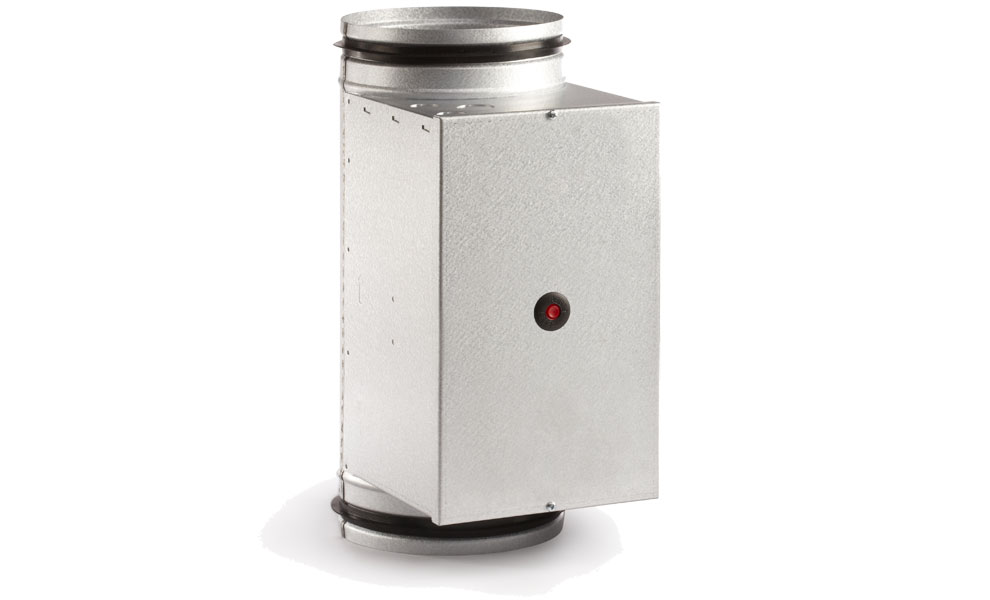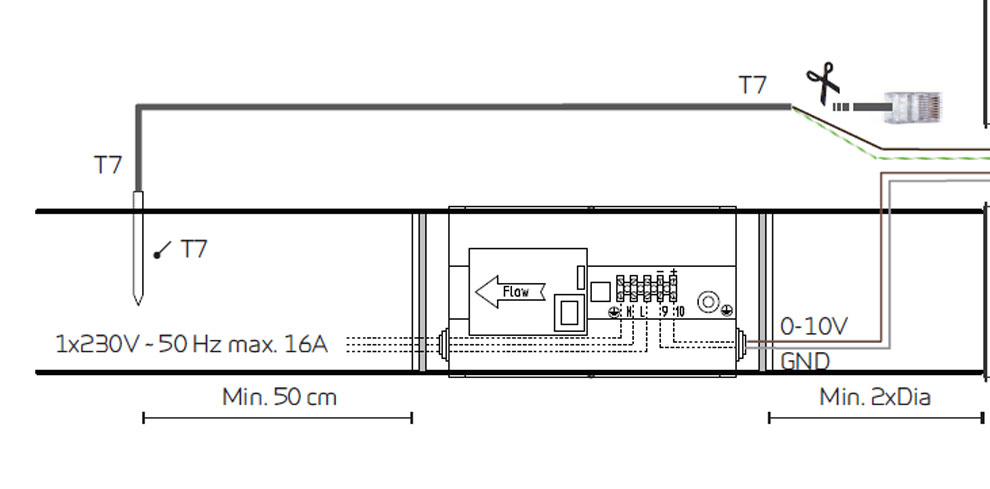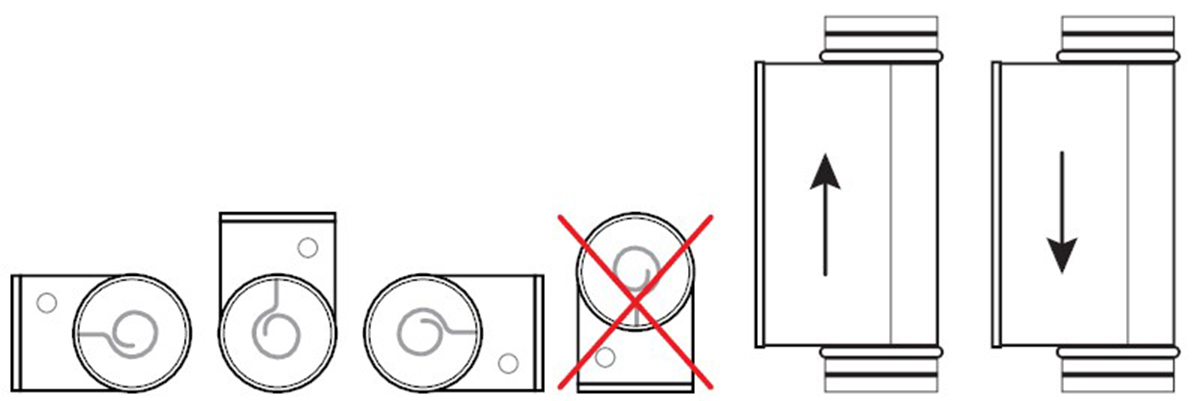Electrical after-heating element Ø200 - 3000W
An after-heating element is often installed if you want to be able to control the supply air temperature. A low supply air temperature may, at times, feel like a draught. By ensuring that the supply air temperature does not fall below a certain level, you achieve a good, comfortable indoor climate.
Energy neutral houses, such as houses built in line with the German Passive House concept, have very low heating requirements. The houses therefore have no traditional heat supply, such as underfloor heating. The ventilation unit heats the dwelling, but during cold spells a small amount of supplementary heating may be required.
During such periods the after-heating element will heat the supply air so the dwelling remains comfortable.
|
Calculation of correct heating element: Δt * air density * air volume [m3/h] E.g. 1: No pre-heater mounted. The temperature must be raised from -10 ºC to 21 ºC at 100 m3/h. 31 * 0,34 * 100 = 1054 W As a minimum, the heating element must be able to supply 1054 W E.g. 2: A pre-heater is mounted. The temperature must be raised from 16 ºC to 21 ºC at 100 m3/h. 5 * 0,34 * 100 = 170 W As a minimum, the heating element must be able to supply 170 W |
|
It is important that the temperature sensor is placed at least 50 cm after the after-heating element in order to achieve efficient regulation. ATTENTION! The heating element must be insulated with a fire retardant insulation material. The cover of the connection box, however, must not be insulated.
Positioning options:
|




